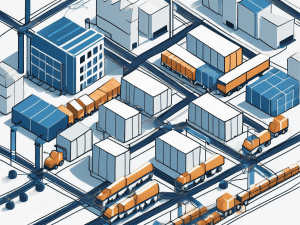How to Build a Bridge Between Ambition and Reality
The Planning Gap Every Business Feels
It’s a familiar story.
Sales is chasing a stretch goal. Operations is preparing for something safer. Finance is modeling both—and hoping one is right.
The result?
Forecasts that fluctuate, inventories that swing, and planning meetings that feel more like debates than decisions.
But here’s the truth: your business doesn’t have a communication problem.
It has a connection problem.
There’s no bridge between ambition and reality.
Why the Bridge Matters
Every business needs tension between aspiration and execution.
Ambition sets direction. Operations grounds it in capacity and risk.
But when those two forces stop talking—or worse, start competing—the planning system fractures.
The Planning Triangle helps rebuild that bridge.
It connects the want (strategic ambition) with the actual (operational results) through a shared think (projection).
That middle layer—the shared forecast—is where alignment lives.
The Middle Layer: Where Alignment Happens
When teams plan in isolation, their logic diverges:
The forecast becomes a negotiation instead of a synthesis.
Building the bridge means turning that middle layer—the projection—into shared truth.
How to Build the Bridge
Start With Shared Language
Drop the jargon. Align on what “forecast,” “plan,” and “commit” actually mean.
Cross-functional clarity starts with definitions, not data.
Surface Assumptions Early
Don’t just share numbers—share why those numbers exist.
What’s the logic behind your forecast? What risks or levers support it?
Make Variance Visible
Compare want → think → actual every cycle.
Highlight where ambition or execution drifted—and why.
Reward Learning, Not Luck
When the team gets better at predicting and adjusting, celebrate that—not just the months you “hit the number.”
Aligning Commercial and Supply Chain Teams
The bridge between ambition and reality isn’t built in meetings—it’s built in habits.
When Sales, Ops, and Finance learn to plan inside the same triangle, they stop debating and start collaborating.
- Sales becomes more strategic.
- Ops becomes more adaptable.
- Finance becomes more trusted.
That’s what alignment really looks like.
From Forecasting to Foresight
Every great plan is a bridge: ambition on one side, execution on the other, learning as the span between.
When that bridge holds, your teams stop fighting gravity and start walking in rhythm.
That’s how you turn forecasts into foresight—and goals into growth.
Strengthen the bridge
Download The Planning Triangle — How Balanced Planning Builds Agility and Trust and start aligning your commercial and supply chain teams today.
DownloadRelated Insights

5 Mistakes That Ruin a Supply Chain Stress Test
Wargames only work if they lead to real changes. Here are 5 supply chain stress test mistakes teams make.

5 Ways to Sustain Post Acquisition Momentum Beyond Day One
Deals close fast. Momentum fades faster. Learn how to fuel post acquisition momentum that lasts.

A Beginner's Guide to Network Analysis in Supply Chain Management
Izba’s beginner’s guide to supply chain network analysis: visualize, optimize, and reduce risk.